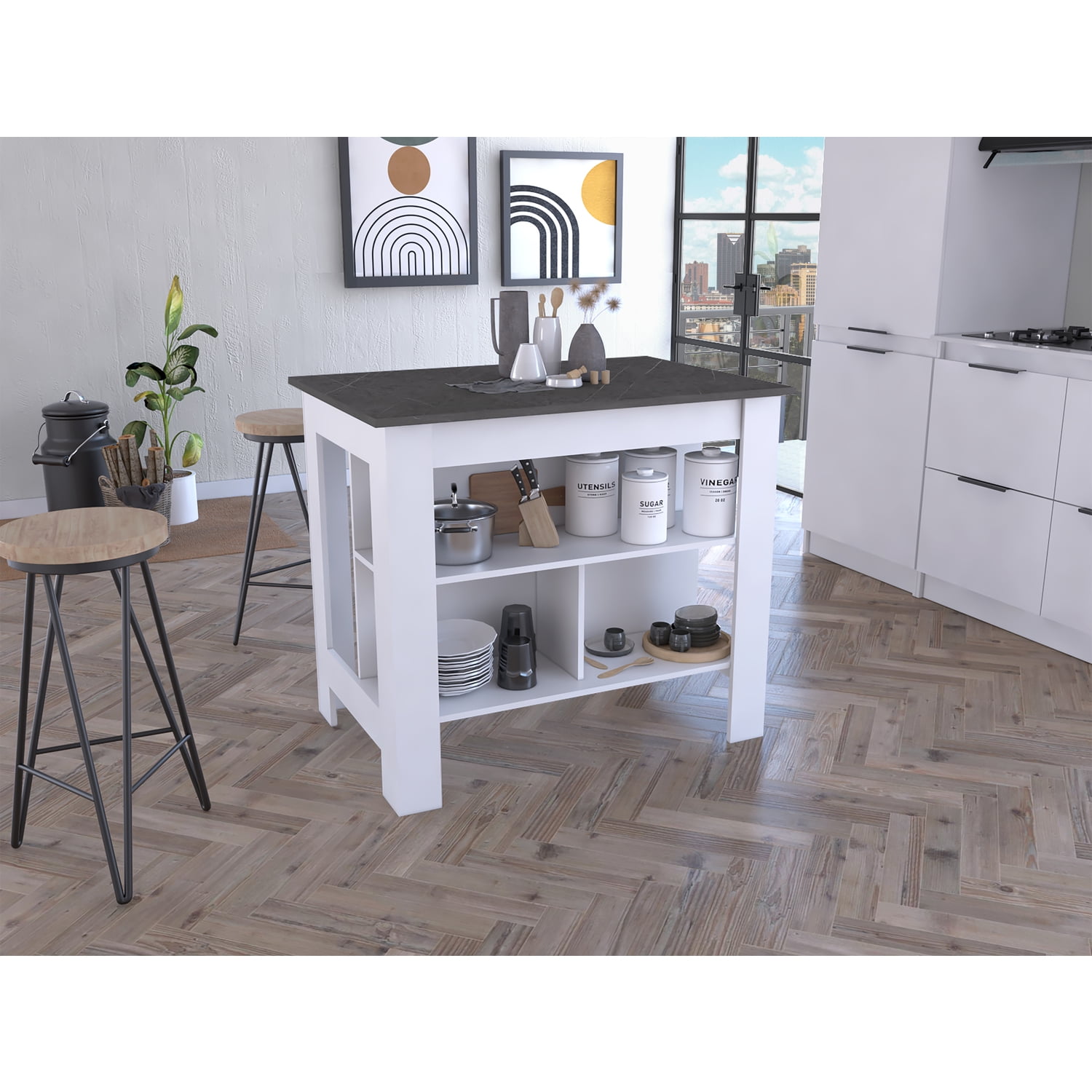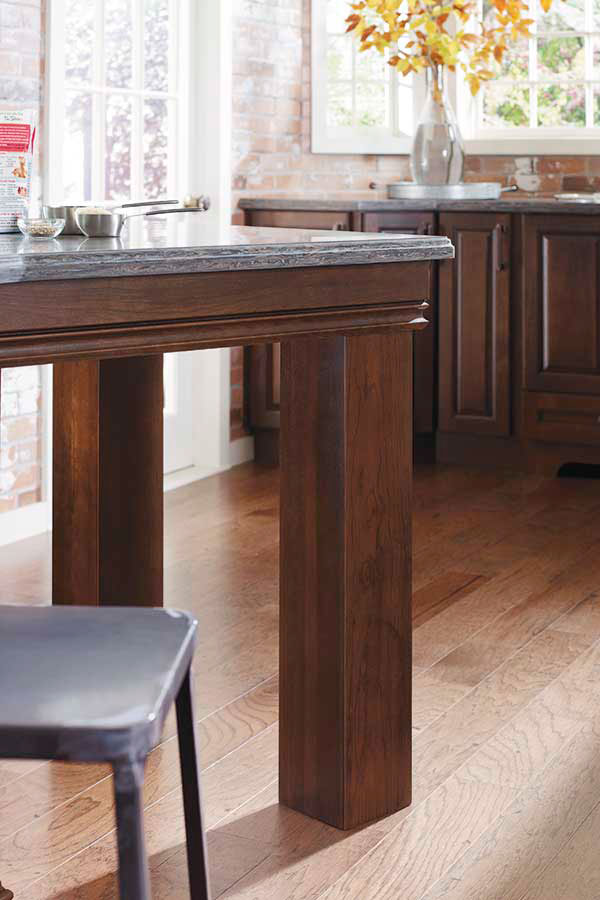Key Considerations for Discovering the Best Legs For Kitchen Area Island for Your Layout
When picking the perfect legs for your kitchen area island, a number of essential factors to consider come right into play that can substantially influence both performance and appearances. The selection of style, material, and height have to align with your overall cooking area layout to guarantee an unified appearance. Additionally, stability and maintenance requirements are critical for long-lasting use and ease of care. Recognizing these variables can improve your kitchen area's usefulness and visual charm, but the subtleties of each factor to consider can commonly be ignored. What effects might these options have on your kitchen's total atmosphere?
Determine Your Style Preference
When picking the excellent legs for your kitchen island,Determining your style preference is essential. The legs of your kitchen area island not only serve a practical function however likewise contribute dramatically to the total aesthetic of the area. As a result, recognizing your layout style-- be it contemporary, rustic, standard, or commercial-- is necessary.
For a modern-day kitchen area, consider streamlined, minimalistic legs that match clean lines and open spaces. Conventional cooking areas commonly favor transformed or elaborate legs, which can include a touch of beauty and sophistication.
In addition, think about the height and proportion of the legs in connection to the island's surface area. Ultimately, your design choice will influence not only the selection of legs however likewise the overall consistency of your kitchen area's layout.
Pick the Right Product
Selecting the right material for your kitchen area island legs is crucial in ensuring both sturdiness and aesthetic charm. Different materials provide unique advantages, and the option typically shows your style preferences and practical requirements.
Wood is a popular choice, providing heat and convenience. It can be tarnished or repainted to match your kitchen area decoration, making it adaptable to various styles, from rustic to modern. Nonetheless, timber may require regular upkeep to protect its look and honesty.

If you seek an one-of-a-kind touch, think about acrylic or glass products. They can create an illusion of area and agility in your kitchen, making them a superb choice for smaller locations - Legs For Kitchen Island. Nonetheless, these alternatives may require cautious handling and upkeep to avoid scratches.
Ultimately, the material you select must straighten with your kitchen's general style, making certain that the legs offer both functional and ornamental objectives.
Take Into Consideration Height and Proportions
When developing a kitchen area island, elevation and percentages play a critical role in ensuring functionality and comfort. The common elevation for a kitchen area island normally varies from 36 to 42 inches, lining up with traditional counter heights or bar heights, respectively. This measurement is essential for integrating with bordering counter tops and stools, enabling convenience of usage throughout meal preparation and social interactions.
Additionally, the island's proportions should complement the total cooking area design. A well-proportioned island ought to not overwhelm the room; instead, it ought to create a well balanced visual. Consider the proportion in between the island's width and size, guaranteeing it offers adequate area without crowding the kitchen area. A general standard is to preserve a width of 24 to 48 inches, promoting motion and ease of access.
In addition, the height of the legs or base can affect the visual allure and performance. Taller legs might offer an extra contemporary, ventilated feel, while shorter ones can stimulate a traditional, grounded look. Ultimately, meticulously thinking about elevation and percentages will lead to a kitchen island that is both aesthetically enticing and functionally effective, boosting the overall style of the room.
Assess Stability and Toughness
A kitchen island's legs need to not just complement its height and percentages but likewise supply adequate stability and toughness to sustain daily activities. The legs are necessary to the overall performance of the island, as they birth the weight of the kitchen counter and any additional tons, such as home appliances or food prep work jobs.
When analyzing security, it is essential to think about the leg style and product. As an example, sturdy metal or solid hardwood legs typically use premium toughness contrasted to lighter products like crafted timber or plastic. Additionally, a larger base can enhance stability, reducing the risk of tipping or tottering throughout usage.
Longevity is just as vital; the legs need to stand up to deterioration from daily use. Consider finishes that protect versus scrapes, dents, and moisture, especially in a kitchen atmosphere. In addition, examine the high quality of building, such as fastenings and joints, which can significantly influence the legs' long-lasting performance.
Eventually, buying well-crafted legs that focus on stability and durability will certainly ensure your kitchen island continues to be a trustworthy work area for several check my blog years to find, enhancing your cooking experiences while maintaining visual charm.
Variable in Maintenance and Treatment
Maintenance and treatment are important considerations for making sure the longevity and efficiency of kitchen island legs. When picking legs, it is important to review the materials made use of, as different choices require varying degrees of upkeep. As an example, wooden legs might require regular refinishing or securing to avoid dampness damage and scratches, while steel legs may need normal polishing to preserve their sparkle and stop corrosion.
Additionally, the finish related to the legs can influence upkeep demands. A high-gloss covering may be much easier to tidy but could show finger prints and scrapes quicker than a matte surface. It is suggested to pick materials and finishes that complement your way of life; for instance, if you often organize celebrations, decide for durable materials that can endure deterioration.
Furthermore, think about the cleansing procedure included in preserving these legs. Smooth surfaces often require very little initiative, while complex styles may collect dirt and grime, demanding even more labor-intensive cleaning approaches. Legs For Kitchen Island. Eventually, considering sites the upkeep and treatment needed for your selected kitchen area island legs will not only enhance their visual allure yet likewise ensure their functional integrity over time
Conclusion
Finally, picking the ideal legs for a kitchen area island requires careful factor to consider of numerous aspects, including design style, product option, height, stability, and upkeep. Each component plays a critical duty in making sure that the legs not only boost the aesthetic appeal of the cooking area but additionally supply the required assistance and toughness for daily usage. A knowledgeable decision will inevitably add to YOURURL.com a useful and visually pleasing kitchen atmosphere.
The legs of your kitchen island not just serve a practical purpose however also add significantly to the total aesthetic of the area.Upkeep and care are critical considerations for ensuring the durability and efficiency of kitchen island legs. Wood legs might require routine refinishing or sealing to stop dampness damage and scrapes, while steel legs may need regular polishing to preserve their sparkle and protect against rust.
Eventually, factoring in the upkeep and treatment required for your selected cooking area island legs will not just boost their aesthetic charm yet also ensure their practical honesty over time.
